Voz de Cabo Verde (II)
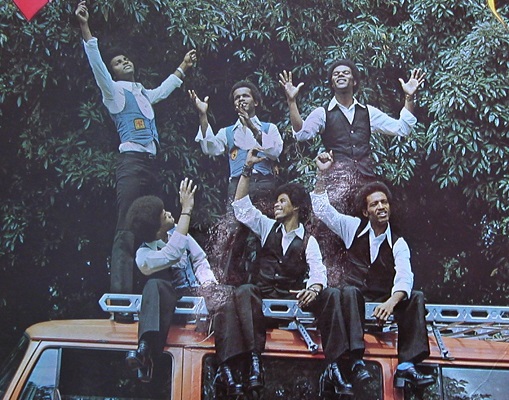
Group, 1972-1985
“So Bana said: ‘We’re not going to end, we’re going to get back together’. At that time, Bana had financial backing, so he started looking for another Voz de Cabo Verde”, says Luís Morais (Cabo Verde e a Música – Dicionário de Personagens). Luís Morais and Frank Cavaquinho were the remnants of the original formation. With several changes, this Voz de Cabo Verde, created in Lisbon, lasted until the mid-1980s.
In February 1972, when the group accompanied Bana at the closing of the Miss Cabo Verde contest at the Cine-Teatro of Praia (O Arquipélago, 02.17.1972). Two other singers performed on stage: Jorge Sousa and Tony Óscar (who also played the organ). In addition to Luís Morais, the other members of the group included Joãozinho Morais on guitar; Piúna on bass, and Frank Cavaquinho on drums. “The group will head to Guinea in a few days, where, at the invitation of UDIB (União Desportiva Internacional de Bissau), they will perform a series of shows, after which they will continue on a tour of São Tomé, Angola and Mozambique”, says O Arquipélago (02.24.1972).
The tour of these former Portuguese colonies was covered by the Cape Verdean newspaper. Under the title “Bana e Voz de Cabo Verde deram show no Império” (O Arquipélago, 05.25.1972) a piece from the newspaper A Voz de São Tomé revealed that the performance, which “excited the audience”, was attended by the governor, the president of the city Council, military leaders, and other local VIPs. “When listening to the group Voz de Cabo Verde, the viewer embarks on a long journey through the Americas, Europe, and Africa. As they change continentes, they savor, at times, hot rythms and, at other times, the longing for a distant land – a longing conveyed through the warm voice of this extraordinary artist, Bana…”
“Off this Voz de Cabo Verde, only two members remain from the group that visited us two years ago: the head of the group, Luís Morais, and the drummer. Of course, it is not easy to replace a bugler like Morgadinho or a vocalist like Djosinha, but the truth is that, even so, the group pleased the audience, not only in their interpretation of the archipelago’s music but also in their international repertoire”
Diário de Luanda, about the new formation of Voz de Cabo Verde, in 1972
About a month later, news about the group emerged from Angola. “Absolute success of Bana and the Voz de Cabo Verde in Luanda”, was the title of na article (O Arquipélago, 06.22.1972) that reproduced a piece from the Diário de Luanda, which it i also commented that “with the exception of the two ‘survivors’ of the old group we have already mentioned, all the rest are quite young”.
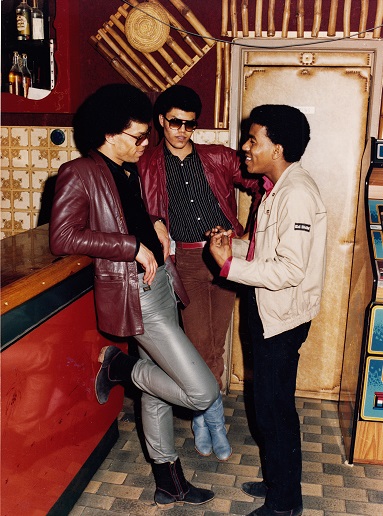
In November of that same year, 1972, the group was again in São Vicente on their way to Guinea, “Where they will perform in Bissau and other locations in that province, showcasing the joy of the music of this land and the pop music so beloved by the youth” (O Arquipélago, 11.30.1972). Throughout 1973, information from O Arquipélago reveals the group’s presence at various events, including the opening of a bar in Porto Novo (02.01.1973); the Carnival ball at Parque Miramar while Os Caites played at Eden Park (02.15.1973); and, at the end of the year, at the Christmas party at the Naval Command, where the group Os Alegres also participated (12.27.1973).
In March 1974, new members were introduced: Paulino Vieira, “the organ magician and pop and soul singer”, Armando Tito, “the international soloist who came with the Lisbon ensemble”, and Cabanga, “currently the best local drummer”. The previous line-up included guitarist Joãozinho (since 1972), as well as Luís Morais and Bana. Later that year, two new members would join, Leonel Almeida (voice) and Bebeth (bass).
“There was almost a ‘universal scare’ due to the fate of Voz de Cabo Verde”, writes the newspaper, “but Luís Morais knew that the group could not disappear. The name was established in all environments, and there was a moral responsibility to fulfill. And so, together with Bana, they are bringing Voz de Cabo Verde to its high level of the past. Their performances in São Vicente have proven this. For Carnival, it was pure delirium. Wherever they were, it was definetely a full house”
(O Arquipélago, 03.07.1974)
In the period between 1972 and 1974, no album was released under the name of Voz de Cabo Verde. However, Luís Morais released 12 albums during this time, seven of which are on Morabeza Records, reflecting recordings from the earlier phase, while five were recorded in Lisbon. Bana, in turn, released three albums during this period, always accompanied by Voz de Cabo Verde, although this fact is not always mentioned on the covers. It was only from 1974 onwards that LPs began to be released under the name of this Lisbon-based Voz de Cabo Verde.
Although Luís Morais claims that after Independence he settled in Cape Verde, his presence – playing, composing, and arranging – was constant on Voz de Cabo Verde’s records during those years. Now, however, he had someone to share the musical direction with, which he had in mind when inviting Paulino Vieira to join the group. Paulino took over the keyboards and, over time, played various instruments, as he mastered them all. At that time the group included: Armando Tito (solo guitar), John (rhythm guitar), Bebeth (bass), and Cabanga (frums), who remained until the end.
Encontrarei o amor (1974) – an eclectic album featuring a repertoire that ranges from Luís Morais to James Brown, Roberto Carlos, and various cumbias – is the first LP by Voz de Cabo Verde, based in Lisbon. Paulino, not only plays on the album but also appears as a singer and songwriter. The title track, which he wrote, features lyrics in Portuguese. Leonel has not yet joined the group; he will arrive at the end of 1974. Alongside Bana, Paulino also sings on Mascrinha, another album from 1974, which follows the pop trends of the time, featuring dance tracks and romantic Latin American and Brazilian songs. Songs from this album led to the release of two singles: one under the group’s name and another titled Bana e Paulino.
In general, the albuns produced by Voz de Cabo Verde feature a varied repertoire, encompassing dance and romantic themes sung in English, Portuguese, Cape Verdean, Spanish, and even French, with ocasional forays into music from Guinea-Bissau and Angola. Following Cape Verde’s independence, intervention songs gained popularity, often referencing Amílcar Cabral, the newfound freedom, and the liberation struggle. Interestingly, by 1979, although the initial euforia of independence had passed, these themes remained prominent. Leonel Almeida typically handled these intervention songs, alongside Latin American tracks, while Bana interpreted Cape Verdean songs with unmatched skill, and Paulino explored other genres. “So I opted for a rhythm that had to do with the old Voz de Cabo Verde– the cumbias e pachangas”, says Leonel Almeida (Cabo Verde & a Música – Dicionário de Personagens). The group’s discography is extensive, with several albums released in the same year, often without their covers indicating this. “Sometimes we recorded three albums in a month”, recalls the vocalist.
In addition to the nine LPs released under the name Voz de Cabo Verde, Luís Morais released at least ten albums during the period from 1975 to 1985, with Bana releasing another ten by Bana in the same timeframe and featuring the same accompaniment. Around 1980, trumpeter Manuel Tidjena contributed to some of these recordings, as noted on the album covers. At one point, Zé António joined the group. As they entered their final phase, new musicians were recruited from São Vicente in 1982, including Toy Vieira and Tito Paris, who initially replaced Cabanga and Bebeth, and then Toy Paris.Their time with the group was brief with Tito leaving before the end.
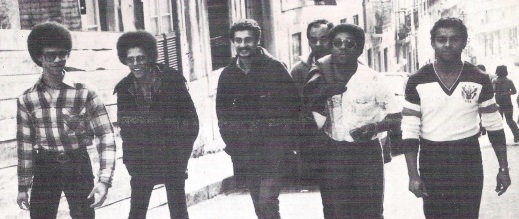
This version of Voz de Cabo Verde, like its predecessor, retained a repertoire and instrumental setup designed for dance music – belonging to the era just before the disco phenomenon, when electric instuments dominated entertainment. Meanwhile, other Cape Verdean groups, such as Os Apolos, Tulipa Negra and África Star, were also making their mark in Portugal. Besides their own albums, Voz de Cabo Verde often served as a support band for other artists, including Bana, Luís Morais, Titina, Jovino dos Santos, Nho Balta, Longino, Chiquinho Nhinha, Sérgio Gomes and José Casimiro. Note the similarity between Voz de Cabo Verde and groups like Splash! andCabo Verde Show (II), which also feature multiple vocalists, some of whom pursue solo careers. This setup makes the group a versatile platform adaptable to diferente types of work. For some individuals associated with the group, this period was just a phase; for others, it served as a launchpad for professional careers that have since become well-established.
In 1982, a concert in the city of Praia led to the creation of an album titled Reencontro. Although the cover does not mention the name Voz de Cabo Verde, it features members from both the original lineup and the then-current group: Bana (vocals), Luís Morais (clarinet; saxophone; arrangements), Morgadinho (vocals; trumpet), Djosinha (vocals), Chico Serra (piano), Paulino Vieira (vocals; drums; organ; solo; guitar solos; choirs; percussion; arrangements), Bebeth (bass), Leonel (choirs) e Zé António (guitar).
Discography
- Encontrarei o amor, LP, VCV, Lisboa, 1974.
- Mascrinha, LP, VCV, Lisboa, 1974.
- Amor por ti/Merengue rebita, single, VCV, Lisboa, 1974. Solos: Paulino (voice), Luís Morais (clarinet).
- Viva liberdade, LP, VCV, Lisboa, [1975].
- Conjunto Voz de Cabo Verde e Luís Morais, LP, VCV, Lisboa, 1975.
- Independência, LP, VCV, Lisboa, 1975.
- Recuerdo, LP, VCV, Lisboa, 1977.
- Muangole, LP, VCV, Lisboa, 1979.
- La Colosa, LP, VCV, Lisboa, 1980.
- Saragarça, LP, VCV, Lisboa, 1980.
- Naufrágio/Sou atrevido, single, VCV, Lisboa, 1982.
- Reencontro, LP, DMC, Lisboa, 1982. Reedited in CD, by Zé Orlando/Sons D’África.
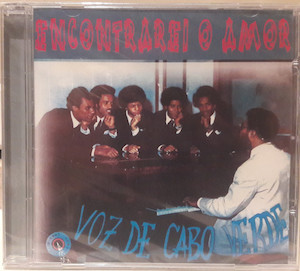
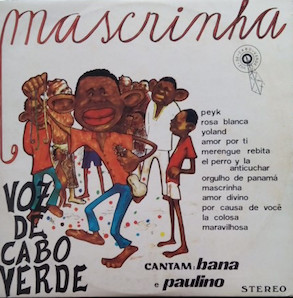
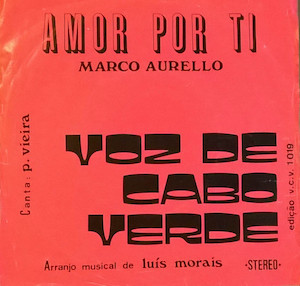
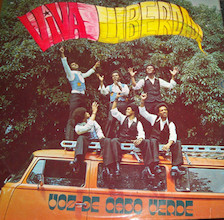
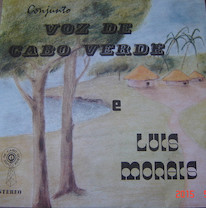
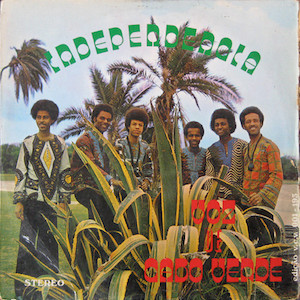
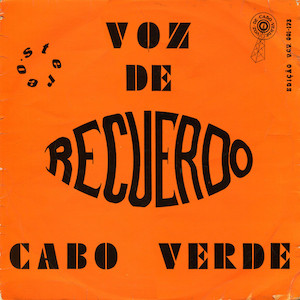
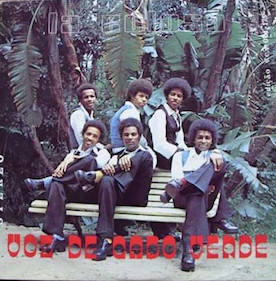

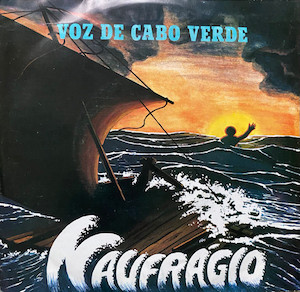
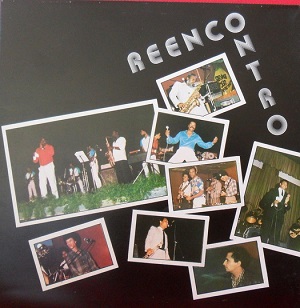
Watch and listen
Collaborated in the research: Francisco V. Sequeira